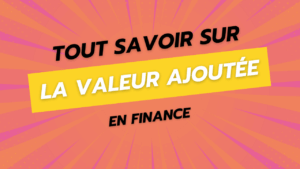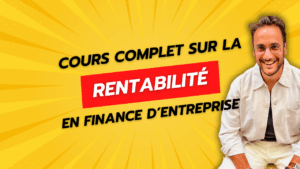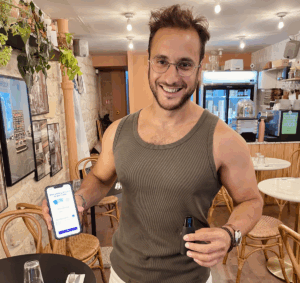Note: article initially published in 2012, and republished in 2023 because it is still relevant in terms of SEO strategy.
Today, I'm going to talk to you about an SEO concept that I recently formalized: push & pull content, notions which call for those of information seekers and information takers.
I actually picked up the concepts from push & pull existing in marketing or distribution to adapt them to web referencing. I will define what these notions cover in my opinion, and what balance we can find between them, with a view to developing an SEO strategy which is in agreement with a site's editorial line defined upstream.
This article should be particularly informative for magazines (hi-tech, women's, or anything else), news sites and blogs, for which SEO constitutes a significant source in terms of traffic, otherwise their main source, but also showcase sites, e-commerce sites, sites that sell training or intangible content, in fact all sites whose objective is to try to expand the audience in one way or another. from another via a qualified SEO strategy.
Note that these are not official or known terms, since I am the one who formalized them in this way.
Push content interests information seekers
Definition of push content
THE push content designates all “pushed” content from a site, i.e. content that is not intended to meet a large convergent demand on search engines (or at least which was not written with this objective), but which is relevant enough to create new demand and arouse the interest of the Internet user barges or the target Internet user. In other words, push content is relatively exclusive, qualitative, entertaining or informational content, which has a certain added value in terms of knowledge, which is likely to interest and retain in the medium term visitors who come across your site and which correspond to an editorial line defined in advance.
Information takers
The visitors captured by push content are what I call “information takers”, in the sense that they are not looking for anything specific at that time, other than something new to consume: they are taking information that they were not necessarily or explicitly looking for in the first place.
Fan of the WordPress ecosystem? Discover the best of my articles on WordPress as well as my WordPress extensions to make your site shine!
Examples of push content
For example, on an entertainment and infotainment site, the push content could be in the form of unusual videos little known but with high viral potential. These videos would not only allow retain visitors already present on the site, by retaining their attention, but also to capitalize on their presence by pushing them to share this “bonus” content on social networks.
These types of videos, very popular at the moment, can be highlighted on a news site as well as on the site or Facebook page of a VSE/SME that wishes to interact with its community.
Push content can also be in the form of files, compilations, top stories, interviews: anything that can add added value but is not intended to answer a practical question via search engines .
Pull content interests information seekers
Definition of Pull content
 Pull content is the opposite of push, the content of your site which will allow you to “pull” the visitor towards your business via web referencing or even social networks.
Pull content is the opposite of push, the content of your site which will allow you to “pull” the visitor towards your business via web referencing or even social networks.
Actually, pull content responds to an already existing request, often practical, and it helps attract prospects, customers and simple Internet users to your platform.
Information seekers
The happy sweater attracts “information seekers”, who are looking for precise information, unlike “information takers”.
Examples of pull content
If we take an example, the Figaro.fr conjugator constitutes a typical example of pull content linked to external growth: we buy or create a conjugation site attached to or in partnership with a general or information site, which aims to attract the Internet searcher (the one who is looking at a specific moment for a precise answer to a specific question, here the conjugation of a particular verb). The objective being on the one hand to retain their loyalty to the conjugation site for their next searches, and ultimately to give visibility to the “Le Figaro” brand.
Another style of pull content could consist of producing the answers to practical questions, for example in a caricatured way: "what is the best diet" or even "difference between gasoline and diesel". As such, forums or even Question Answer sites are typically based on the concept of pull content, because they are mainly found via search engines, for a specific question, which on the sum of pages published creates traffic .
Finally, the last example of pull content that comes to mind is the current tendency of general information sites to target buzz news, as much by alignment with the current intellectual impoverishment of the online press as by an SEO strategy to attract new visitors via search engines. I call this method (without any value judgment) the “SEO solicitation” strategy, which I will return to in more detail at the end of this article.
The subtle balance between push and pull content
 Gain an audience through pull…
Gain an audience through pull…
Pull content is the kind of content that is perfect for websites looking for traffic. No need for a particular editorial focus, pull content requires a team of editors dedicated to covering a particular SEO need, or if the means are there, external growth through the acquisition and integration of useful and practical sites.
…while communicating around a push strategy
At least two reasons justify not falling into a pull strategy at 100%. Both are linked to maintaining a certain credibility, both in the eyes of readers or consumers and in those of advertisers.
Indeed, many online magazines are losing their bearings by only focusing on sweaters, forgetting that the pull is only a traffic driver, but it does not allow you to sell a product and a marketing target.
The push to maintain an editorial line worthy of the name
Producing push content and highlighting it on a site is guarantee the site a logical editorial line (defined at management level) and which respects all stakeholders: editors, readers, and advertisers. It is therefore a question of allocating a large part of the efforts to the production of push content, in order to capture new arrivals who come among other things from the pull on the one hand, but above all to respect the regulars who return every day in the name of 'an editorial line that they appreciate.
The push to avoid losing credibility in the eyes of advertisers
As noted above, push content not only allows you to remain a magazine, site or blog worthy of the name in the eyes of readers, but also in the eyes of advertisers, who need to be permanently reassured on the editorial line chosen and target aimed.
The SEO soliciting technique
This technique consists of allocating a certain share to push content (let's say 60%), making sure to communicate around a concept, a target and an editorial line via push while producing in parallel and in a less ostentatious manner pull content ( to 40%) which is as wide as possible in order to gain traffic.
This conceptual paradigm is used at discretion on a good number of sites, whose managers have understood that the web is an infinite space, and that an editorial concept reached saturation very quickly if it only relied on news and therefore on its homepage alone. The idea is to occupy the space.
Therefore, the so-called “SEO solicitation” technique can consist of produce happy sweater, but also to diversify your activity (games, guest blogging, thematic sub-blogs) in order to increase the audience. The more important the latter, the more it becomes a selling point with advertisers!
This is why it is so important to break down the cognitive barriers that lead project designers to believe that they are limited to their project and their editorial line: by allowing user generated content, or opening forums, and by diversifying as a general rule, you can quickly explode the counters. It doesn't matter if traffic is diluted across several activities, because this dilution is not a "cheat" but a real strength for salespeople, who can use diversification as a real persuasive argument.
Conclusion: know how to occupy space
 More than a simple explanation on the differences between push and pull content, researcher and information taker, the general idea that I try to convey in this article is the following: the editorial heart (defined as being push content intended for target readers and “information takers”) is not always a traffic driver, even if it constitutes an output of “digital goodwill” (a more or less subjective goodwill linked to editorial quality).
More than a simple explanation on the differences between push and pull content, researcher and information taker, the general idea that I try to convey in this article is the following: the editorial heart (defined as being push content intended for target readers and “information takers”) is not always a traffic driver, even if it constitutes an output of “digital goodwill” (a more or less subjective goodwill linked to editorial quality).
Therefore, to influence the ranking of audiences, SEO strategies are possible. Starting with the allocation of part of the efforts to the production of “pulled” content, supposed to attract the “information seeker” Internet user, but also the diversification and user generated content (opening of a blogging platform, guest-blogging, forums).
Web space being infinite, the more space you occupy, the more likely you are to be found on Google, and the better your figures are, even if all of your traffic is not concentrated on your homepage: no one will blame you, as long as you are honest with your partners about your different activities.
Note: be careful not to confuse push content and qualitative content for example, these terms do not absolutely mean the same thing. Pull content can be qualitative, and push content can very well be light or quantitative, depending on the defined editorial strategy.







3 Responses
It's incredible how much our respective thoughts converge. With a slightly different typology, I am currently thinking about exactly the same thing: what I call educational information (that which teaches you something, which answers a specific question, or which makes you gain maturity on a specific aspect) and consumer information, that which captures your attention and helps to distract you, while familiarizing you a little more with the ecosystem of the subject in question.
Once again, an impressive value added item.
Significantly different typology but in spirit the vision is indeed the same: casting a wider net to better consolidate your community 😉
Thank you again for your feedback and relaying my posts, it’s a pleasure to talk with you!
Boost site traffic by combining push content and pull content http://t.co/KHhxa0Sk